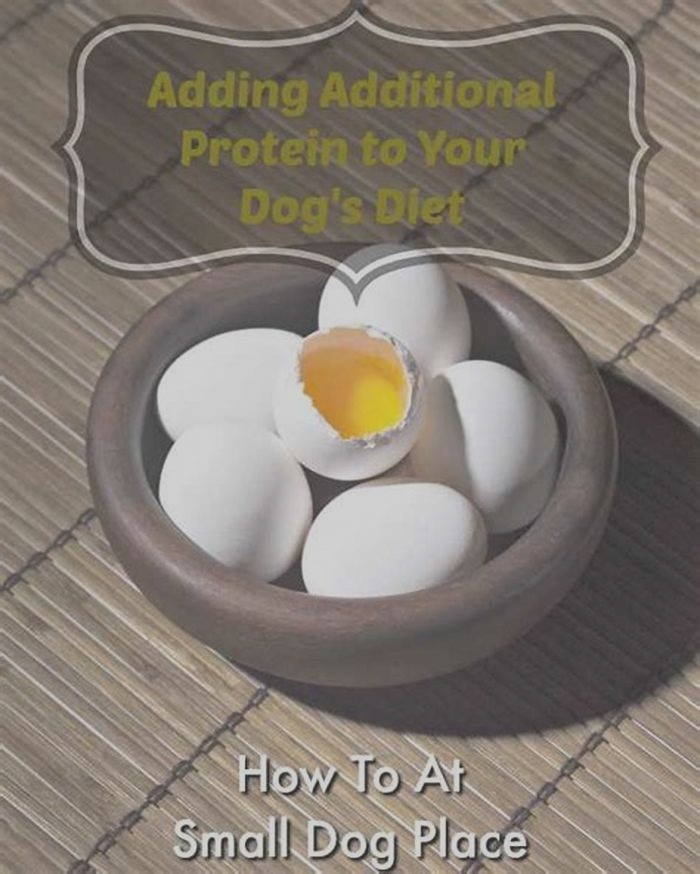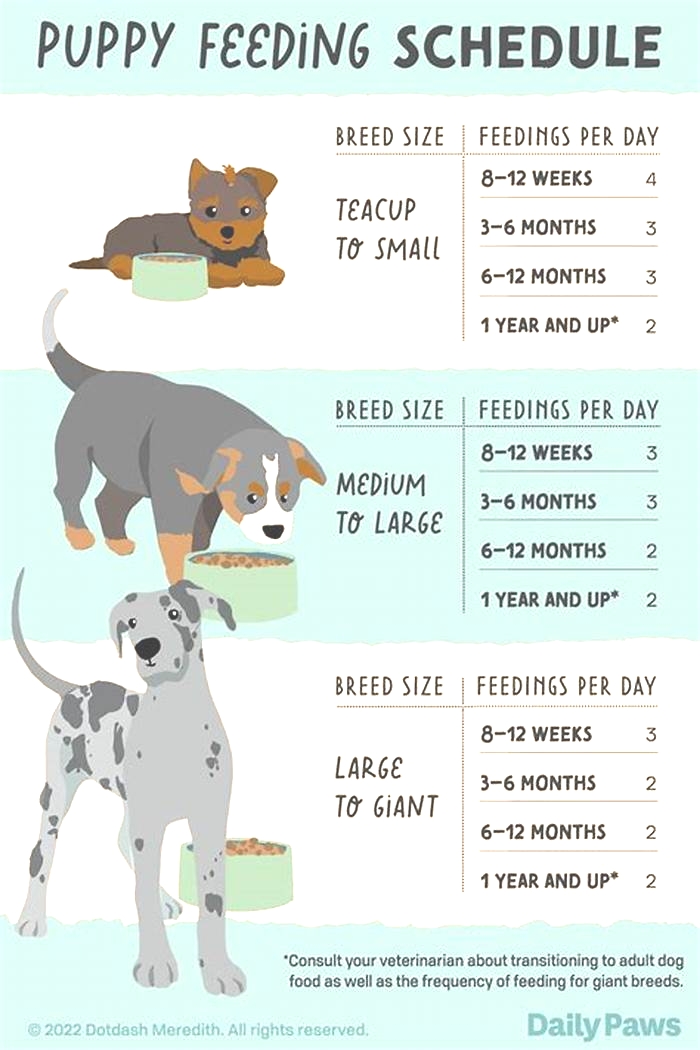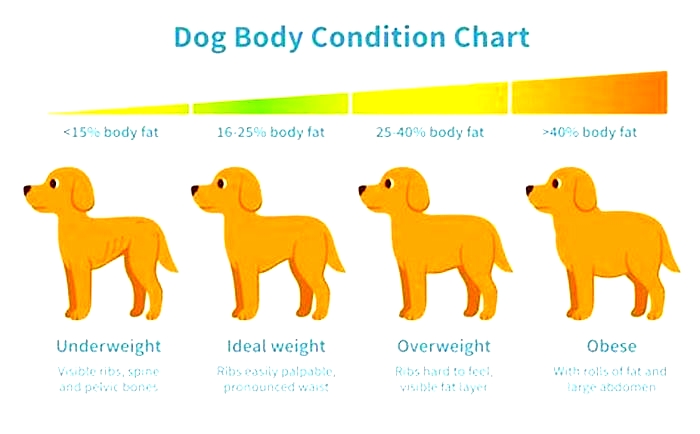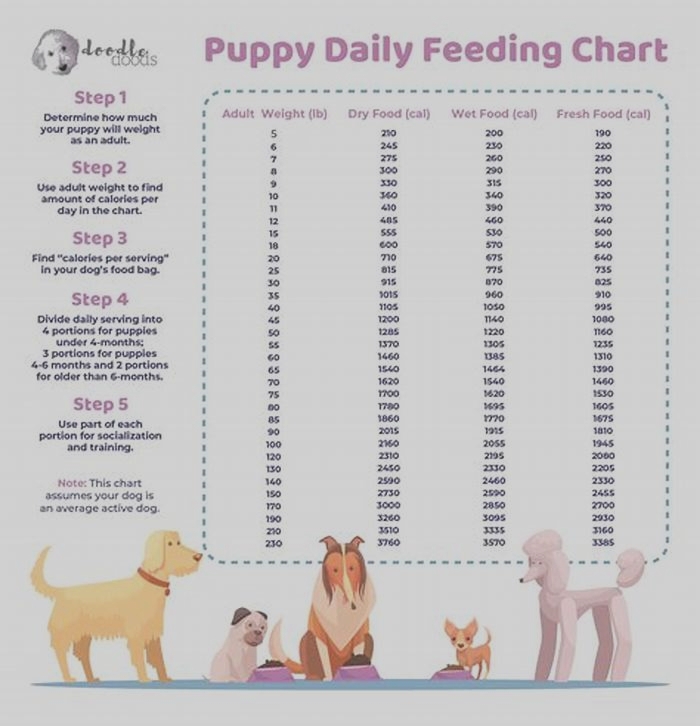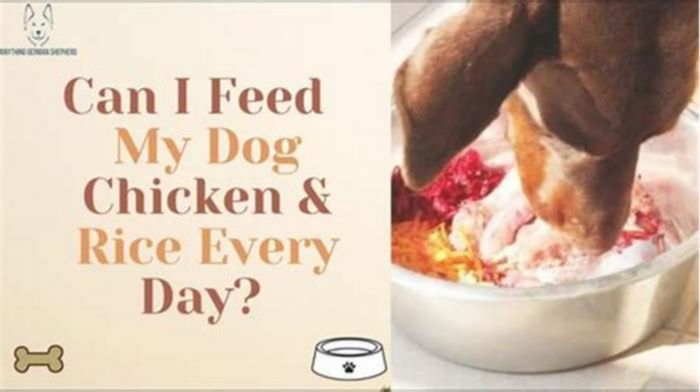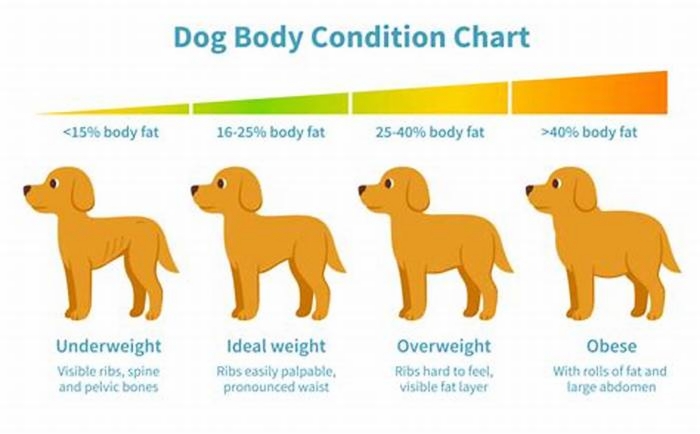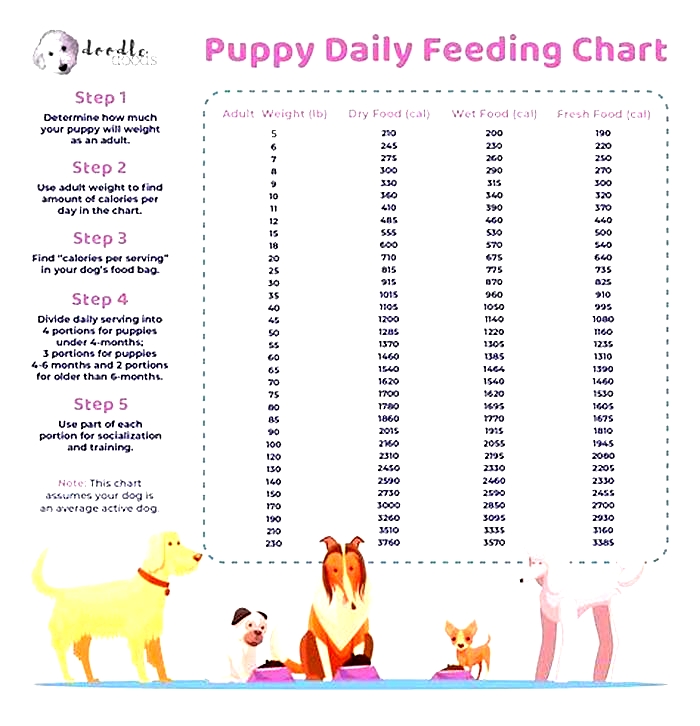Should you feed an underweight dog more
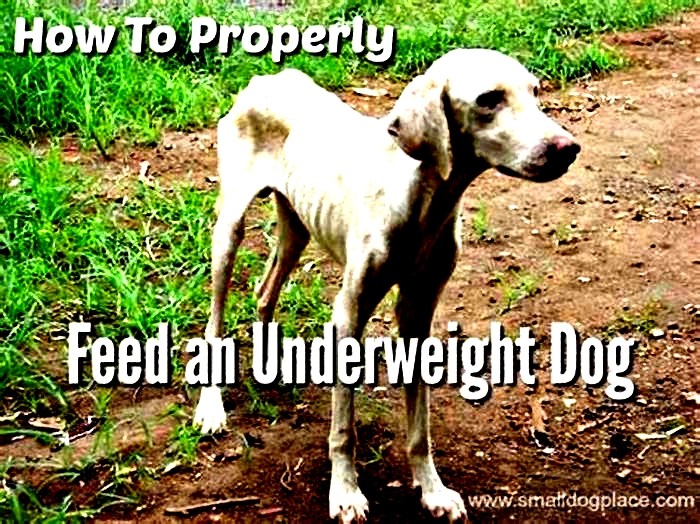
Feeding An Underweight Dog Properly
Feeding An Underweight Dog Properly
Last Updated November 22, 2021
If you have an underweight dog or one that is thin and malnourished, you have a big problem.
It will require a great amount of protein and fat, that should be followed by a balanced diet before your dog can fully recover. Malnourishment is also a condition that is caused by the lack of proper nutrients in a dogs diet.
You should keep in mind that overfeeding your pet is a no no. You should not overfeed your pet in the event that it doesnt eat for a couple of days since its stomach will be more vulnerable to being stretched and could bring serious damage.
Reasons for a Malnourished Dog
There are a lot of reasons why your dog can become too skinny.
When a dog is lost or has been abandoned, the dog might go several days without eating reducing its weight dramatically.
The underweight dog could suffer from some disease or parasites that stop it from eating and being at its optimum weight. One reason that a dog can be very thin is due to some kind of nervous breakdown.
Sometimes when your dog does not eat, its blood sugar levels decreases. The decrease in glucose will affect your dogs body, weakening the function of the brain, kidneys, muscles, and heart.
It is important to always determine the cause of your dogs weight issue before you try anything since they are a handful of medical issues that causes weight loss.
Examples are digestive disorders, intestinal worms, intestinal obstructions and kidney failures are just a few of the problems that could be a reason of your dogs lack of substance.
Let me give you some methods on how to properly feed a malnourished dog.
Methods to Properly Feed an Underweight Dog
The first method is to increase the quantity of food that your dog eats in a day.
For raw feeders, you should add more muscle meat to help put on the pounds, or you might also want to increase the overall percentage that you feed to your dog.
For dogs that are eating a commercial kibble diet, you can add an extra half cup or full cup as your dogs mid-day snack.
For dogs who are on a homemade diet, you should increase the number of carbs and protein.
Another method to note when you feed a malnourished dog is that you should always dish out the meals yourself.
You must never allow your dog to have free access to food and let him/her freely eat for the first few days after having gone without food.
I recommend that you feed your dog only small portions every 6 hours, so that your dogs will eat four times per day.
Remember that when your underweight dogs stomach has gone through a long period of no food, it will dramatically shrink and become more vulnerable to stretching when your starts to eat again.
However, this sensitivity to expansion will just appear in about five days if you just follow the right feeding method.
Also, when you feed a malnourished dog, you should never give it one large meal that will last the whole day since this could be very harmful and dangerous to them.
Another option is you can add one whole raw egg to your dogs food bowl, this large amount of protein will ensure to help pack on some weight on your dogs weight.
CAUTION ABOUT RAW EGGS:In healthy dogs, too many raw eggs can lead to a biotin (vitamin B7) deficiency which is potentially serious. The potential risk would be far worse for a dog who is already malnourished. Cooked eggs, however, are safe.
You can also include fruits and veggies like pumpkin, sweet potato, apples, green beans and raw green tripe on your dogs food bowl.
Another option to consider is the amount of calories in the food that your dog eats during his delicate condition.
The calories that should be consumed by your dog should be the same as what dogs eat under normal circumstances.
You should also make sure that the dog will always have free access to water for them to stay well hydrated. Dehydration in dogs is very serious. Consider 15 percent loss of water could be fatal to any dog.
Finally, providing healthy treats and snacks for your dogs is an excellent way to add extra calories to their diet.
But make sure you do not go overboard with the treats since that could be an easy way to jump to the other side of the weight spectrum.
I would recommend feeding your dogs with high-quality food that has an average fat content of at least 18 percent and between 25 and 30 percent of protein. For a dog to gain weight, it needs to be fed with a large amount of fat.
About Janice (author and voice behind this site)
Having lived with dogs and cats most of her life, Janice served as a veterinary technician for ten years in Maryland and twelve years as a Shih Tzu dog breeder in Ohio.
Her education includes undergraduate degrees in Psychology with a minor in biology, Early Childhood Education, and Nursing, and a master's in Mental Health Counseling.
She is a lifelong learner, a dog lover, and passionate about the welfare of animals. Her favorite breed for over 50 years has been the Shih Tzu, but she has also lived with Poodles, Maltese, Yorkshire Terriers, Beagles, English Bulldogs, Carin Terriers, and a Cocker Spaniel.
When not writing, reading, and researching dog-related topics, she likes to spend time with her eight Shih Tzu dogs, husband, and family, as well as knitting and crocheting. She is also the voice behind Miracle Shih Tzu and Smart-Knit-Crocheting
Does This Article Deserve Your Thumbs Up?
We always appreciate your support and encouragement. Your thumbs up means so much to us. Please like this article.
If you find this page or any page on Small Dog Place Helpful, or useful in anyway, I'd love it if you would click the small heart found on the bottom right of each page.
You can also share or bookmark this page -- just click on the:
Free Monthly Newsletter
Sign Up for Our Free Newsletter and get our Free Gift to You.
my E-book, The Top 10 Mistakes People Make When Choosing a Dog (and how to avoid them)
How to Fatten Up a Dog: Tips and Tricks for a Healthier Pup

So, youve got a skinny pup on your hands and are wondering how to fatten up a dog. Underweight is not a common issue among most dog owners, but those who experience it know how challenging it is to cope.
The journey to help your dog gain weight involves exploring the intricate world of canine nutrition. Youll need to discover what, when, and how to feed your dog to help them pack on a couple of those healthy pounds.
In this article, well explore some tips and tricks for helping your dog gain weight safely and effectively. We have gathered the expertise of veterinary sources such as Canine and Feline Nutrition and veterinarians to truly help in your dogs weight gain journey and we will look at one of my recent rescue cases and how we got a pup from an emaciated state to happy and healthy.
So, How Do You Fatten Up A Dog?
If you want your dog to gain weight, there are several things you can do. You can increase their amount of food, add more calories to existing quantities, increase feeding frequency, opt for high protein and fat foods, and deworming. Youll also need to work with your vet to determine any underlying medical issues like thyroid and gastrointestinal problems and cancer.
There is a major pet overweight problem that is almost reaching pandemic levels. A whopping 59% of dogs are obese in the US alone, according to US Pet Obesity Report from the Association for Pet Obesity Prevention. However, underweight is another sore issue that doesnt get nearly enough attention.
The most probable scenario is having recently rescued a lost or stray dog in a bad condition. However, even your own perfectly healthy dogs may be shedding pounds concerningly. Check out our article on senior dogs losing weight if you suspect the issue is a result of age.
If your dog is severely thin and malnourished, it will take several weeks of dedication and the pain of watching the dog in that condition to get back to normal. Take an example of this Pittie, who went from being almost unconscious due to malnutrition to being full of life:
But first, lets see how you can tell if your dog is too skinny.
Case Study Example: How Uzzi Survived Severe Emaciation & Gained Weight

The picture above is of a dog I rescued about a year ago named Uzzi at the time he was first found and I took him to the vets office in critical condition. In the realm of canine rehabilitation, the journey from rescue to recovery can be both heart-wrenching and incredibly rewarding. This was certainly the case with Uzzi, a rescue that arrived on the brink of survival. His case serves as a poignant example of how to properly nurse a severely underweight dog back to health.
Uzzis story began with an urgent situation; at approximately four months old, he was emaciated, tipping the scales at a mere 6kg, which is roughly 13 poundsa harrowing sight for such a young pup. His body was a stark testament to the battle he faced: he wasnt just thin; he was a patchwork of skin and bones, and his weakness was palpable.
After a prompt visit to the vet, the diagnosis was severe: tick bite fever had ravaged his tiny body, a wound on his belly was infected, and he was extremely anemic with grim chances of survival. The vets office became a war room, charting out a strategy that included an intensive treatment regimen.
We had to resort to feeding Uzzi watered-down Hills Urgent Care Prescription dog fooda high-calorie solution designed for critical conditionsby syringe to ensure he received the vital nutrients he desperately needed. This is pretty much the same stuff I gave my puppy Arthur when he later battled Parvo.
As Uzzis strength returned, so did his instinct to eat. We continued with the Urgent Care formula, offering him small, frequent meals to manage his intake without overwhelming his compromised system. However, Uzzis appetite soon seemed insatiable; he began to display signs of pica, consuming stones, sticks, and other inedible objects in a desperate attempt to satisfy his hunger.
To curb this dangerous behavior, I made an exception to my usual feeding practices and started free feeding him, ensuring constant access to appropriate food to deter him from ingesting non-food items.
Remarkably, within two weeks of this structured yet nurturing approach, Uzzis transformation was nothing short of miraculous. He gained sufficient weight and strength, blossoming from a frail creature into a lively puppy with a shiny coat and bright eyes, ready to embark on a new chapter in his forever home.
The visual testimony of Uzzis journey is powerfulbefore and after photos capture not just a change in physique but the emergence of a spirited dog, full of life, where once there was only a shadow. Uzzis case is a clear illustration that with the right care, even dogs on the brink of death can recover, thriving to become healthy, vibrant companions. The picture below shows what Uzzi looks like today:

11 Steps to Fatten Up Your Dog
So, how do you get your dog to gain weight safely? Remember, always have your dog checked for an underlying health issue behind a dog losing weight or looking thin. After a thorough vet assessment, there are a few steps you can take to help your dog achieve a healthy weight.
1. Assessing Your Dogs Diet: Find the Problem First
When it comes to helping your dog gain weight, its important to start by assessing their current diet. Here are a few things to consider:
Calorie Intake
First, we need to determine how many calories your dog needs each day. This will depend on their size, age, activity level, and overall health. As a general rule, most adult dogs need between 25 (large breeds) and 40 (small breeds) calories per pound of body weight per day. However, if your dog is very active or has a high metabolism, they may need more.
To calculate your dogs daily calorie needs, you can use an online calculator or consult with your veterinarian. Once you know how many calories your dog needs, you can start to adjust their diet accordingly. However, most dry foods have already done this calculation for you. All youd need to know is the dogs weight.
Nutritional Value
Next, we need to look at the nutritional value of your dogs food. Is your dogs food completely balanced with protein (30%), carbs (45%), fat (20%), and vitamins? Do they eat enough food, or are they always foraging for poop and garbage later? If not, youll know what to change.
Remember, its important to make any dietary changes slowly and gradually to avoid upsetting your dogs digestive system. If you have any concerns about your dogs diet, be sure to consult with your veterinarian.
2. Keep fat content to between 15 and 20% of the diet (dont overdo it)
When it comes to fattening up a canine, fats will be your closest friend. We recommend that you aim for a fat content of between 15 and 20% of your dogs diet. As with everything, too much of something becomes a poison. So too much fat, particularly unhealthy ones, will cause pancreatitis and other health issues
When choosing foods for your dog, try to stick to healthy fats, especially omega-3 and omega-6 fatty acids. The right balance is 5:1 omega-3 to omega-6, so always make sure the omega-3 sources exceed the other ones.
Omega-3 fatty acids like DHA and EPA in fish oils are anti-inflammatory and essential for gut health. Omega 6 is in chicken oil and vegetable oil like sunflower and safflower oil. Purified MCT oil is another great addition that has also been shown to have cognitive benefits for dogs.
However, dont confuse MCT oil and coconut oil. Studies show that the saturated fats in coconut oil can cause high cholesterol in your dog and even fatty plaques to develop in the arteries.
To help ensure that your dog is getting the right amount of fat in their diet, consider consulting with a veterinarian or a professional dog nutritionist. They can help you to create a balanced and healthy diet plan that meets your dogs specific needs and goals.
3. Keep a Diet High in Protein
Protein is essential for building muscle, which can help your dog gain weight in a healthy way. Protein through animal sources is also the best way to get amino acids like methionine, taurine, and L-carnitine. These are vital in supporting the heart muscle since a loss of muscle mass due to weight loss puts extra strain on the heart.
However, its important to note that this is only beneficial for dogs who do not have liver or kidney problems and can safely metabolize high quantities of protein.
We recommend that your dogs diet consists of 30 to 40% protein. You can achieve this by feeding them high-quality dog food that is rich in protein. Look for dog food that lists meat as the first ingredient, as this is a good indicator of high protein content. Before upping your dogs protein intake, make sure your vet checks them for underlying health issues.
Another way to increase your dogs protein intake is to supplement their diet with lean meats, such as chicken, turkey, or beef. Cook the meat thoroughly and remove any bones or fat before feeding it to your dog.
Its important to remember that while protein is essential for building muscle, it should not be the only component of your dogs diet. Make sure they are also getting enough carbohydrates and healthy fats to ensure a balanced diet. Because studies show that high-protein, low-carb diets lead to weight loss, and you dont want that for your underweight dog.
4. Feed Healthy Carbohydrates
When it comes to feeding our furry friends, we all want to make sure they are getting the best nutrition possible. Incorporating healthy and digestible carbohydrates into your dogs diet can be a great way to help them gain weight.
Carbs should not be the majority of the diet, but they do play an important role in providing energy. By including healthy carbs, your dog can use them for energy and reserve the fat and protein to build muscle and gain weight.
Some healthy carbohydrate options include:
- Sweet potatoes;
- Brown rice; and
- Oats.
Its important to note that not all carbohydrates are created equal. Avoid feeding your dog processed and sugary foods, as these can lead to weight gain in an unhealthy way. Stick to whole foods that are easy to digest and provide nutritional value.
Incorporating healthy carbs into your dogs diet can be as simple as adding a small portion to their regular meals. Talk to your veterinarian about the appropriate amount of carbs to include in your dogs diet based on their specific needs.
5. Feed Multiple Small Meals a Day
Feeding your dog multiple small meals a day can help them gain weight more effectively. This approach is particularly useful for dogs with a small appetite or a sensitive stomach.
When you feed your dog one or two large meals a day, they may struggle to eat all the food at once, leading to a loss of appetite. By contrast, feeding them smaller portions throughout the day can help them maintain a consistent appetite and consume more calories overall.
To implement this feeding strategy, try dividing your dogs daily food intake into several smaller meals. For example, if your dog needs to eat 2 cups of food per day, you could feed them four -cup meals instead of two 1-cup meals.
6. Transition to a High-Calorie Diet Slowly to Avoid Diarrhea
When it comes to transitioning your dog to a high-calorie diet, its important to do it slowly to avoid any digestive issues. Sudden changes in diet can cause diarrhea, which can lead to dehydration and other health problems. You can read our article on how to help a dog with an upset tummy if you suspect a change in diet has reacted with them.
Here are a few tips for transitioning your dog to a high-calorie diet:
- Start by adding a small amount of high-calorie food to your dogs regular diet. This could be a tablespoon of canned food or a few pieces of kibble.
- Gradually increase the amount of high-calorie food over the course of a week or two. This will give your dogs digestive system time to adjust to the new food.
- Monitor your dogs stool during the transition. If you notice any signs of diarrhea, such as loose stools or frequent bowel movements, slow down the transition process and give your dogs digestive system more time to adjust.
- Consider adding a probiotic supplement to your dogs diet to help support digestive health during the transition.
Remember, every dog is different, and some may require a slower transition than others. If you have any concerns about your dogs health during the transition process, consult with your veterinarian.
7. Treat Your Dog for Internal Parasites
Parasites like roundworms, mango worms, hookworms, and tapeworms can cause serious health problems for your dog, including weight loss and malnutrition. The best way to prevent and treat internal parasites in your dog is to work with your veterinarian. They can recommend the most effective treatments and help you develop a plan to keep your dog parasite-free.
Here are a few things you can do to help prevent and treat internal parasites in your dog:
- Schedule regular check-ups with your veterinarian. They can perform fecal exams to check for internal parasites and recommend appropriate treatments.
- Keep your dogs living space clean and hygienic. This includes regularly cleaning up after your dog and washing their bedding and toys.
- Use flea and tick preventatives. Fleas and ticks can carry internal parasites, so its important to keep them under control.
8. For Dogs With Cachexia & Anorexia, Prioritize Getting Them to Eat
When a dog is suffering from cachexia (muscle wastage from extreme illness) or anorexia (refusing to eat), it is crucial to prioritize getting them to eat. These conditions can cause severe weight loss, muscle wasting, and weakness, making it difficult for your dog to fight off illness and recover. Dogs with chronically low appetites may have an insufficiency of hormones like ghrelin, which makes them less hungry.
To encourage your dog to eat, you may need to offer them their favorite foods throughout the day, even if they are not part of a balanced diet. You can also try adding some healthy and tasty treats to their meals to make them more appealing.
However, it is important to keep in mind that some conditions may require specialized diets. If your dog has congestive heart failure along with cachexia, for example, they will need a low-sodium diet. In this case, you may need to work with your vet to create a meal plan that is both low in sodium and appealing to your dog.
In some cases, force-feeding may be necessary to ensure your dog is getting the nutrition they need. However, this should only be done under the guidance of a veterinarian, as it can be dangerous if not done correctly.
9. Keep Your Dog On A Balanced Diet (Avoid Overfeeding Treats)
While treats can be a great way to add some extra calories to your dogs diet, overfeeding them the wrong food can create a dietary imbalance, which can result in health problems.
Its important to limit the number of treats dogs receive each day to avoid overfeeding them. We recommend that treats make no more than 10% of your dogs daily caloric intake. This means that if your dog needs 500 calories a day, they should receive no more than 50 calories from treats.
Its also essential to choose high-quality treats that are packed with nutrients. Look for treats that are made with real meat, and avoid treats that are high in sugar or artificial ingredients, like xylitol.
10. Exercise and Play for Weight Gain
Regular exercise is vital for low-weight dogs, but it can be counterproductive if you are trying to help your dog gain weight. So, what kind of exercise should you do?
First, its important to note that exercise should never be completely eliminated. Even dogs that are trying to gain weight should still be taken on walks regularly. However, the key is to keep the exercise low-impact and low-intensity. This means shorter walks and avoiding activities that require a lot of running or jumping.
Instead, focus on playtime. Encourage your dog to play with toys and engage in activities that promote movement without being too strenuous. Fetch, tug-of-war, and gentle wrestling are all great options.
Another way to incorporate exercise into your dogs routine is through swimming. Swimming is a low-impact exercise that can help build muscle and increase appetite. If you have access to a pool or a safe body of water, consider taking your dog for a swim a few times a week.
11. Monitoring Your Dogs Progress: Set a Target Weight with Your Vet and Stick to Weekly Weigh-Ins to Monitor Progress
Your vet can help you determine what a healthy weight range is for your dog and help you set a target weight. Once you have a target weight, its essential to stick to weekly weigh-ins to monitor your dogs progress. This will help you determine if your dog is gaining weight at a healthy rate and will allow you to make adjustments to their diet as necessary.
How to Assess If A Dog Is Underweight
An underweight dog may be more susceptible to health problems and may not have the energy to enjoy life to the fullest. Here are a few things to consider when assessing if your dog is underweight.
How Many Ribs Are Showing
One way to tell if your dog is underweight is to look at how many ribs are showing. If you can see more than two or three ribs, your dog may be underweight. However, keep in mind that some breeds naturally look thin and may have more visible ribs.
Consider Breed
When assessing your dogs weight, its important to consider their breed. As mentioned above, some breeds may naturally look thin. Additionally, some breeds may have a higher or lower healthy weight range. Your veterinarian can help you determine what a healthy weight range is for your dogs breed.
Some naturally skinny breeds include:
- Greyhounds;
- Whippets;
- Sloughi;
- Borzoi;
- Azawakh; and
- Saluki.
Assess Protrusion of Spine and Hip Bones
Another way to tell if your dog is underweight is to assess the protrusion of their spine and hip bones. If you can see the spine and hip bones easily, or if they feel sharp to the touch, your dog may be underweight.
Reasons for Your Dogs Low Weight

If you notice that your dog is underweight, there could be several reasons behind it. Finding the reason will help you formulate an accurate solution to the weight issue.
Some of the common reasons for low weight in dogs are:
Health Conditions
Certain health conditions can cause your dog to lose weight. These conditions include gastrointestinal problems, dental issues, thyroid issues, cancer, heart, liver, or kidney disease, neurological disorders, and infections.
Dietary Insufficiency
Not giving your dog enough food will cause weight loss. Additionally, dietary issues can also cause your dog to lose weight. These result from diets that may be too low in fat and calories, or very high in fiber. Biologically inappropriate diets not correctly formulated for dogs can cause weight loss and digestive issues like constipation, anal issues, and nausea.
Stress and Anxiety
Stress and anxiety can also cause your dog to lose weight. PMC studies show that If your dog is stressed or anxious, they may not eat as much as they should, known as anorexia nervosa, leading to decreased appetite. Additionally, stress can cause your dogs body to burn more calories, which can lead to weight loss.
Aging
As dogs age, their metabolism may slow down, and they may naturally lose weight and muscle mass. This is not necessarily a health issue but rather a normal part of the aging process.
Metabolic Conditions
Conditions like diabetes, hyperthyroidism, or Addisons disease can affect a dogs metabolism and result in weight loss.
Pickiness
A very low food drive in some dogs can cause them to ignore food. So, sometimes its just as simple as your canine is a bit too fussy.
When to Consult a Vet About Your Dogs Weight Gain
If you are trying to fill out your dog, it is crucial to keep an eye on their health. While it is normal for dogs to gain weight, excessive weight gain can be a sign of an underlying health issue. Here are some signs that it may be time to consult a vet:
- Sudden weight loss or gain: If your dog has suddenly lost or gained a significant amount of weight, it could be a sign of an underlying health issue.
- Changes in appetite: If your dogs appetite has suddenly changed, it could be a sign of an underlying health issue.
- Vomiting or diarrhea: If your dog is vomiting or has diarrhea, it could be a sign of an underlying health issue.
- Lethargy or weakness: If your dog is lethargic or weak, it could be a sign of an underlying health issue.
If you notice any of these signs, it is important to consult a vet. Your vet can help you determine if there is an underlying health issue that needs to be addressed. They can also provide you with advice on how to safely and effectively fatten up your dog.
Frequently Asked Questions (FAQs)
What are some high-calorie puppy foods?
There are many high-calorie puppy foods available in the market. Look for foods that are specifically formulated for puppies and are high in protein and fat content. Some popular options include Purina Pro Plan Puppy Large Breed Formula, Blue Buffalo Life Protection Puppy Chicken and Brown Rice Recipe, and Hills Science Diet Puppy Large Breed.
What are some high-calorie food toppers for dogs?
Food toppers are a great way to add extra calories to your dogs diet. Some high-calorie food toppers include canned dog food, cottage cheese, boiled chicken, and scrambled eggs. You can also add some healthy fats like fish oil or MCT oil to your dogs food.
What are some dog weight gain supplements?
There are many dog weight gain supplements available in the market. Some popular options include Miracle Vet High-Calorie Weight Gainer, Dyne High-Calorie Liquid for Dogs, and Buddy & Lola Weight Gainer for Dogs. Always consult with your veterinarian before giving any supplements to your dog.
What can I give my dog to help them gain weight?
You can give your dog high-calorie foods like chicken, beef, and fish. You can also add extra calories to their meals by mixing in some canned dog food, a little cottage cheese, or scrambled eggs. Make sure to consult with your veterinarian before making any changes to your dogs diet.
How do you feed an underweight dog?
Feeding an underweight dog requires a gradual increase in their food intake. Start by feeding them small meals throughout the day and gradually increase the amount of food over time. Make sure to feed them a high-calorie diet and add extra calories to their meals with food toppers like fish oil.
Why is my dog not gaining weight even though they are eating?
There could be many reasons why your dog is not gaining weight even though they are eating. Some possible reasons include underlying health issues, parasites, stress, and poor-quality food. Consult with your veterinarian to rule out any underlying health issues and to develop a proper feeding plan for your dog.
Final Thoughts
Filling out your dog will take time and effort. However, its possible with steps like adding protein and fats and increasing food quantity and frequency. While it may be tempting to overfeed your dog in an effort to fatten them up quickly, its essential to do so healthily and sustainably. This means gradually increasing their food intake and incorporating healthy, high-calorie foods into their diet.
Meet Your Experts
Tamsin De La Harpe
Author
Tamsin de la Harpe has nearly two decades of experience with dogs in rescue, training, and behavior modification with fearful and aggressive dogs. She has worked closely with veterinarians and various kennels, building up extensive medical knowledge and an understanding of canine health and physiology. She also spent two years in the animal sciences as a canine nutrition researcher, focusing on longevity and holistic healthcare for our four-legged companions.Tamsin currently keeps a busy homestead with an assortment of rescue dogs and three Bullmastiffs.
Tamsin de la Harpe has nearly two decades of experience with dogs in rescue, training, and behavior modification with fearful and aggressive dogs. She has worked closely with veterinarians and various kennels, building up extensive medical knowledge and an understanding of canine health and physiology. She also spent two years in the animal sciences as a canine nutrition researcher, focusing on longevity and holistic healthcare for our four-legged companions.Tamsin currently keeps a busy homestead with an assortment of rescue dogs and three Bullmastiffs.

